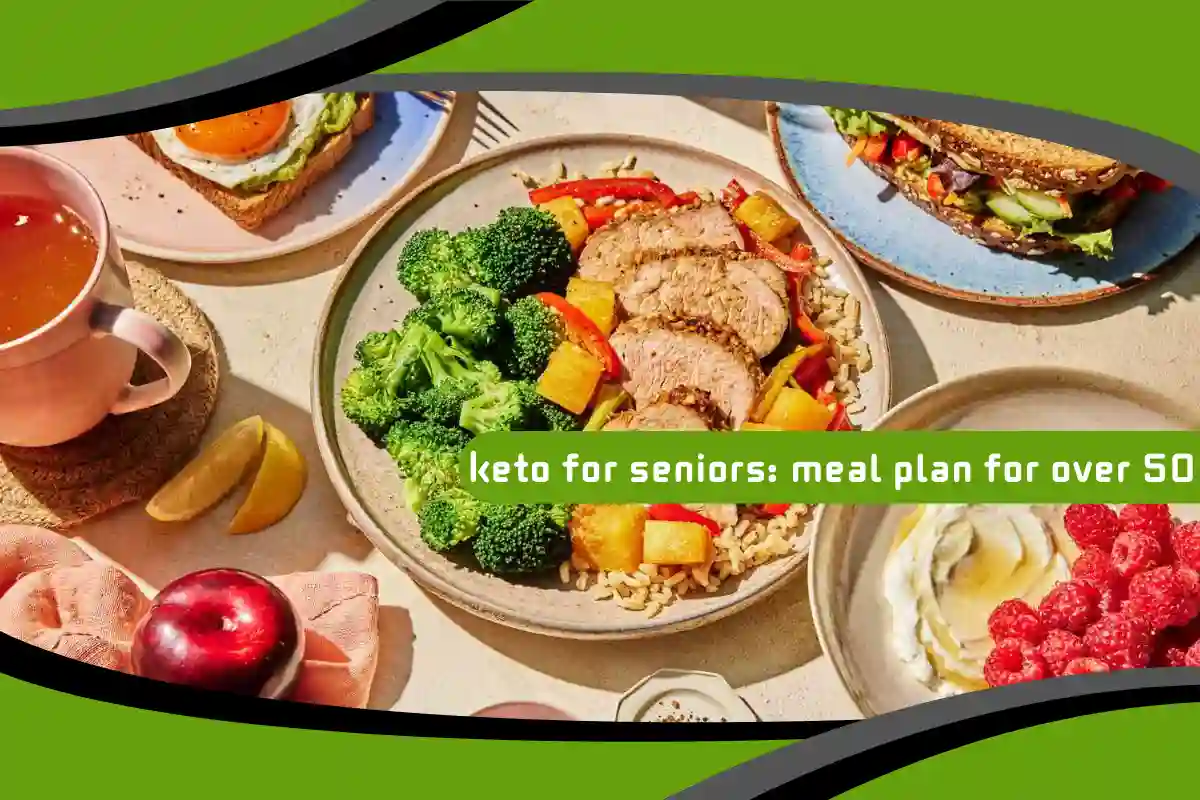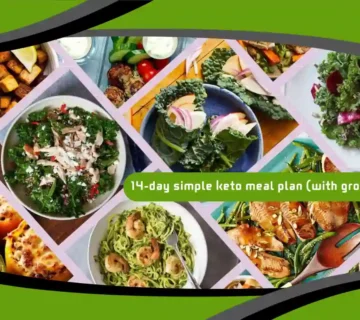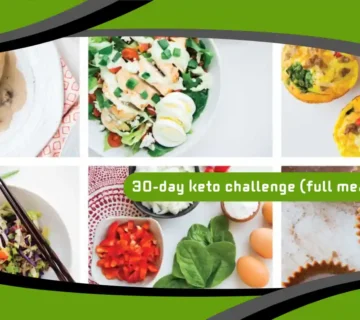The ketogenic diet, often referred to as the keto diet, has surged in popularity across all age groups—but for seniors over 50, its benefits can be particularly impactful. As the body ages, metabolism slows down, muscle mass decreases, and chronic conditions become more common. Keto can help address these challenges by promoting metabolic health, supporting weight management, and reducing inflammation. However, transitioning to a keto lifestyle after 50 requires thoughtful planning and nutritional awareness. This article explores how seniors can safely and effectively follow a keto meal plan, with expert guidance and practical insights.

Understanding Keto for the Over-50 Demographic
The ketogenic diet is a low-carbohydrate, high-fat eating pattern designed to shift the body into a state of ketosis, where fat becomes the primary fuel source. For seniors, this metabolic shift can enhance energy levels, support cognitive clarity, and help manage blood sugar levels. However, nutritional needs change with age, so it’s essential to tailor the diet carefully. Seniors need more calcium, vitamin D, and protein to support bone and muscle health, making it critical to choose keto foods that offer more than just fat.
The Role of Nutritional Density After 50
As we age, our ability to absorb and utilize nutrients becomes less efficient. Therefore, seniors following a keto diet must prioritize nutrient-dense foods. This includes fatty fish rich in omega-3s, leafy greens packed with folate and magnesium, and nuts and seeds that provide healthy fats and fiber. Unlike younger adults who may rely on processed keto snacks, older adults should focus on whole, minimally processed options to maximize nutrient intake and avoid inflammatory additives.
Prioritizing Heart Health on Keto
Cardiovascular health becomes a primary concern after 50, and many seniors worry that a high-fat diet could negatively affect cholesterol levels. However, when the keto diet is built around healthy fats—such as olive oil, avocado, nuts, seeds, and fatty fish—it can actually support heart health. These fats help reduce inflammation and may improve lipid profiles by increasing HDL (good cholesterol) while decreasing triglycerides. Seniors should avoid trans fats and limit saturated fat to maintain optimal heart function.
Customizing Macros for Aging Bodies
Unlike younger keto followers, seniors require a unique macronutrient balance that supports both metabolic goals and muscle maintenance. A moderate protein intake is essential to prevent sarcopenia (age-related muscle loss). While the classic keto macro ratio is 70% fat, 25% protein, and 5% carbs, seniors may benefit from a more moderate approach such as 60% fat, 30% protein, and 10% carbs. This adjustment helps preserve lean muscle mass without compromising ketosis.
Importance of Protein Quality in Senior Keto
After 50, muscle mass naturally declines, which makes protein quality especially important. Seniors on keto should opt for high-biological-value proteins like eggs, poultry, fish, and collagen-rich bone broth. These protein sources provide essential amino acids, especially leucine, which supports muscle protein synthesis. Combining protein with resistance exercise further enhances its benefits and helps maintain strength, mobility, and independence in daily life.
Watch also: Ultimate Keto Meal Plan for Muscle Gain: Build Lean Muscle While Staying in Ketosis
Staying Hydrated on a Ketogenic Diet
Dehydration is a common risk on the keto diet due to increased diuresis and electrolyte loss. Seniors are already more prone to dehydration due to a diminished sense of thirst. It’s essential to drink plenty of fluids and replenish electrolytes regularly. Bone broth, mineral water, and electrolyte supplements can help maintain sodium, potassium, and magnesium levels, preventing symptoms like fatigue, dizziness, or muscle cramps.
Managing Electrolyte Balance for Seniors
Proper electrolyte management is critical for anyone on keto, but especially for those over 50. Sodium, potassium, and magnesium support heart rhythm, nerve function, and hydration status. Seniors should consume salt-rich foods like olives and broth, potassium-rich options like spinach and avocado, and magnesium from seeds and dark chocolate. Supplementation may be necessary in some cases, particularly when symptoms of imbalance arise.
Keto and Bone Health Considerations
Osteoporosis risk increases with age, making bone-supportive nutrients like calcium, magnesium, and vitamin D even more crucial. Some critics worry that keto may contribute to calcium loss, but a well-formulated keto diet can be bone-friendly. Including dairy (if tolerated), leafy greens, almonds, and fish with edible bones (like sardines) helps provide the calcium seniors need. Ensuring adequate vitamin D from sunlight or supplements also supports bone integrity.
Cognitive Health and Ketones
One of the most exciting benefits of keto for seniors is its potential support for brain health. Ketones serve as an alternative fuel source for the brain and may improve cognitive function in aging adults. Early research suggests that keto could benefit those with mild cognitive impairment or early-stage Alzheimer’s disease. By reducing blood sugar spikes and enhancing mitochondrial efficiency, keto may help protect brain cells and delay cognitive decline.
Intermittent Fasting and Seniors: Proceed with Caution
Intermittent fasting is often paired with keto, but it may not be appropriate for all seniors. While some older adults thrive with time-restricted eating, others may experience fatigue or blood sugar dips. Any fasting protocol should be supervised and personalized based on medical history, energy levels, and medication use. A modified eating window, such as 10 hours of feeding and 14 hours of fasting, may offer benefits without undue strain.
Safe Keto Transitions for the 50+ Age Group
Transitioning to keto later in life should be done gradually to minimize symptoms of the “keto flu” and ensure the body adapts safely. Seniors should start by reducing sugar and refined carbohydrates while increasing healthy fats over 1–2 weeks. This phased approach helps the body adjust and allows for more stable blood sugar, mood, and energy levels.
Working with a Healthcare Professional
Before starting any new diet, especially after 50, it’s crucial to consult with a healthcare provider. Keto can interact with medications for diabetes, blood pressure, and cholesterol. A doctor or registered dietitian can help monitor lab markers, adjust medications, and ensure the diet is being followed safely and effectively.
Watch also: Ultimate Keto Fall Meal Plan: Delicious Pumpkin Recipes for Low-Carb Living
Sample Meal Plan for a Senior on Keto
A typical day might begin with a breakfast of scrambled eggs cooked in butter with sautéed spinach and avocado. Lunch could include grilled salmon on a bed of arugula, drizzled with olive oil. Dinner might feature roasted chicken thighs with cauliflower mash and steamed asparagus. Snacks could include a handful of walnuts or full-fat Greek yogurt. Each meal should be built around whole foods and mindful of portion sizes.
Keto-Friendly Snacks for Seniors
Seniors may benefit from easy-to-digest, nutrient-rich snacks between meals. Great keto options include cheese sticks, hard-boiled eggs, cucumber slices with guacamole, and low-carb smoothies with collagen powder. Avoid highly processed keto products, which may contain hidden sugars or inflammatory oils. Simple, homemade snacks tend to offer better nutrition and satiety.
Monitoring Ketosis and Progress
Tracking ketone levels using urine strips or a blood ketone meter can help determine if you’re in ketosis, especially in the early stages. More importantly, seniors should monitor how they feel—energy, sleep, blood sugar, and weight trends are valuable indicators of success. Regular check-ins with a healthcare provider can help optimize results and make necessary adjustments.
Potential Risks and Contraindications
While many seniors thrive on keto, it is not suitable for everyone. Those with kidney disease, pancreatitis, gallbladder removal, or advanced liver disease may not tolerate the diet well. Individuals on certain medications, like insulin or diuretics, require close monitoring. It’s essential to evaluate risks and benefits on a case-by-case basis with professional input.
Adjusting for Activity Levels
Physical activity is vital at any age, but especially for seniors who want to maintain mobility and strength. The keto diet can support energy for low- to moderate-intensity activity like walking, swimming, or yoga. Post-workout nutrition should include quality protein and electrolytes to aid recovery. Seniors should listen to their bodies and adapt their meal timing and portions accordingly.
Incorporating Fiber-Rich Low-Carb Foods
Constipation can be an issue on keto if fiber intake is insufficient. Seniors should focus on non-starchy vegetables like broccoli, zucchini, leafy greens, and cauliflower to boost fiber without increasing carbs. Chia seeds, flaxseeds, and psyllium husk can also support digestion and gut health. Drinking enough water alongside fiber is essential for preventing gastrointestinal discomfort.
Long-Term Sustainability of Keto After 50
Seniors can maintain a ketogenic lifestyle long-term by focusing on variety, balance, and flexibility. A sustainable keto approach involves regularly rotating protein sources, incorporating seasonal produce, and enjoying occasional carb refeeds if needed. The goal is not perfection but consistency and overall health. With a thoughtful and nourishing approach, keto can be a safe and effective dietary strategy for thriving after 50.
Watch also: Keto for Women: A Complete Meal Plan for Weight Loss, Energy, and Hormonal Balance



No comment